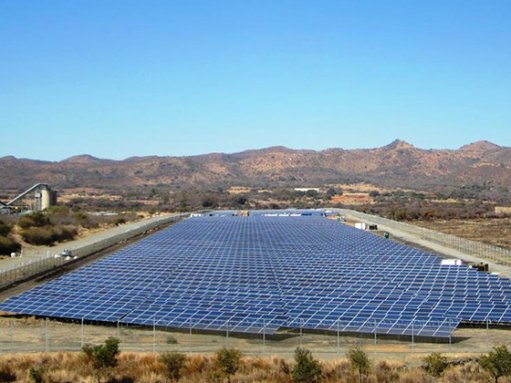
Soil stabilisation products supplier AnyWay Solid Environmental Solutions says Renewable Energy Independent Power Producer Procurement Programme (REIPPPP) project managers should consider environment-friendly options as alternative methods for road building and restoration.
“With the majority of independ- ent power producer (IPP) projects scheduled to be completed between 2014 and 2016, IPP sites are being constructed in remote areas and access to these areas is made difficult, owing to poor-quality roads. These roads are unable to withstand the extremely heavy parts being trans- ported for use in the structures being created. In many cases, roads have had to be rebuilt – a process that brings with it financial costs and harm to the environment,” says AnyWay Solid Environmental Solutions MD Jean du Plessis.
He notes that traditional road-repair and construction methods involve excavating and transporting the existing substandard soil and importing materials from borrow pits to the road site. This is detrimental to the environment, given the emissions produced during the high number of trips made by the trucks transporting the material, and the use of heavy machinery, that create spoil sites and open new borrow pits.
To counteract this, the company notes that IPP project managers should consider alternative methods as an environment- friendly option for road building and restoration, such as stabilising the existing material to create durable, load-bearing layers.
“The benefits of this environment-friendly option include less haulage and excavation, reduced use of heavy equipment, a decrease in [the number of] spoil sites being created, less material being imported from quarries or borrow pits and the recycling of soil and materials. Also, some soil stabiliser brands have been tested and found to be nonleaching and nontoxic – this poses no danger to crops, animals or water sources,” says Du Plessis.
He adds that mineral soil stabilisers can also be used at the IPP project sites to build site roads and crane pads. This will provide significant benefits in terms of costs and construction time, while improving the engineering characteristics of the soil sufficiently.
Tests on the soil where road repair and construction have taken place prove that the soil stabilises with even a nominal amount of mineral soil stabiliser used. This can increase the bearing capacity of roads and crane pads by up to 1 120 kPa – far exceeding the bearing capacities required. More- over, it makes sense to stabilise the soil, since suitable natural gravels or quarried materials are often not available within a logistically and economically feasible distance from the site.
Although IPP projects, once completed, will have a significant impact on the country’s greenhouse-gas emissions, Du Plessis points out, it is important to take steps now to decrease the ecological footprint of these projects.
“It is the responsibility of all involved in these projects to ensure that all the innovative environment-friendly methods are investigated and used. We found that the people involved in the actual construction phases are not entirely motivated to consider these new construction methods,” he explains.